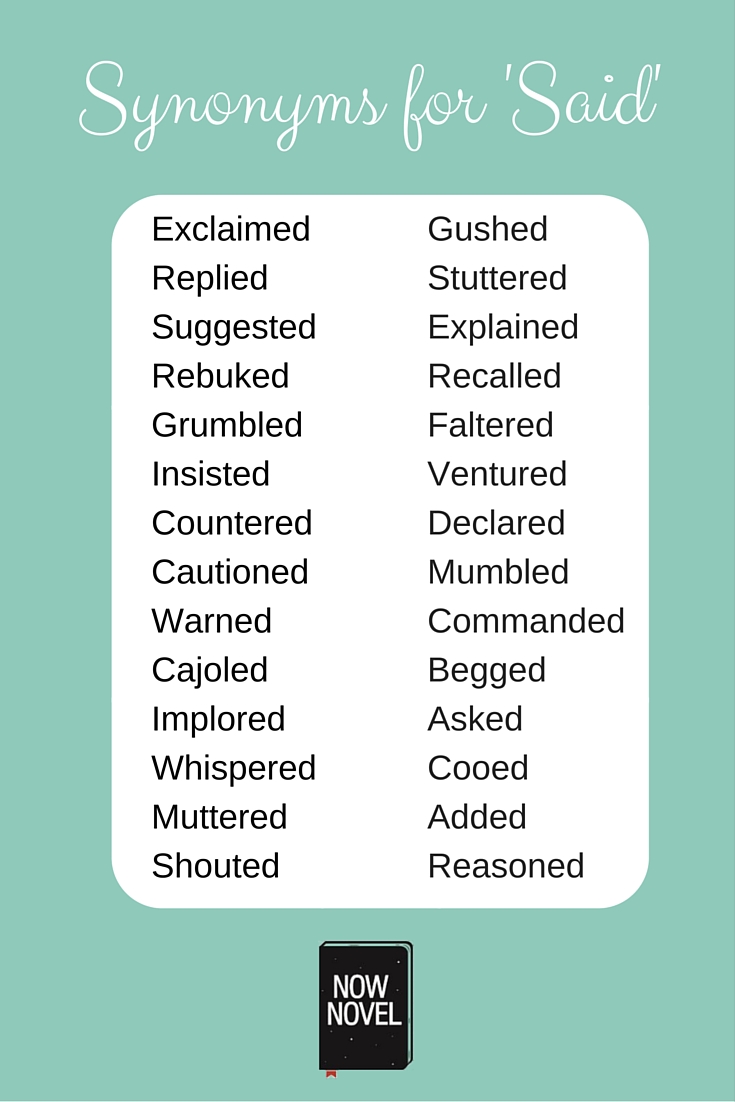Tips on WRITING DIALOGUE
Contents:
It is often the best choice, no matter what words you might come up with. Hemingway was a master at this. In this story, the man is trying to convince the girl to have an abortion a word that does not appear anywhere in the text.
Her silence is reaction enough. By using a combination of sidestep, silence and action, Hemingway gets the point across through a brief, compelling exchange. Silence and bacon fat hardening.
Enter your email to instantly access my ultimate guide to writing a novel.
What are your characters feeling while exchanging dialogue? Try expressing it with the sound of silence. I have a somewhat arbitrary rule—one gem per quarter.

Divide your novel into fourths. When you polish your dialogue, find those opportunities in each quarter to polish a gem. And how do you do that? Like a diamond cutter, you take what is rough and tap at it until it is perfect. The point is you can take almost any line and find a more sparkling alternative. Just remember to use these gems sparingly. The perfect comeback grows tiresome if it happens all the time. Many writers struggle with exposition in their novels.
Often they heap it on in large chunks of straight narrative. Backstory—what happens before the novel opens—is especially troublesome. How can we give the essentials and avoid a mere information drop? First, create a tension-filled scene, usually between two characters. Get them arguing, confronting each other. Then have the information appear in the natural course of things. Here is the clunky way to do it:. This is a much underused method, but it not only gives weight to your dialogue, it increases the pace of your story.
Reader Interactions
This is a favorite technique of dialogue master Elmore Leonard. By excising a single word here and there, he creates a feeling of verisimilitude in his dialogue. It sounds like real speech, though it is really nothing of the sort. Here is a standard exchange:. It sounds so natural, yet is lean and meaningful. Pick your spots and your characters with careful precision and focus, and your dialogue will thank you for it later. Using tools is fun when you know what to do with them. For more great writing advice, click here. Follow Brian on Twitter: This is all great advice, which will help me greatly in my writing!
Actions speak louder than words. I have to disagree with 3. The examples provided actually demonstrate different writing styles. The first is simple and formal, easy to digest and understand. The others seem like an attempt to develop character or progress the story through just those sections, utilizing suspense and a shift from the expected to the unexpected to draw the reader in understand though, the more common that is, especially within a single book, the less compelling and captivating it becomes overall. Using slang would be characteristic of a character, not good writing practice.
I found the last part form Leonard very helpful. Immediately, went and changed some dialogue. Thanks for all the advice and tips.
How to Write Captivating Dialogue in 6 Simple Steps - Jerry Jenkins
Being able to label a tool to store away for later use is much easier than just trying to instinctively improve the text or solve the issue when I hit a road block. Thanks again for helping out the little guys and gals. Your articles are simple to understand and I have developed my writing skills by regularly reading your articles. Thank you for your good work.
Jul 2, Top 12 Tips for Writing Dialogue Realistic dialogue written well can advance a story and flesh out characters while providing a break from. Need help writing dialogue for your novel? This guide will give you tips for writing smart dialogue that helps the reader connect with your characters.
You must be logged in to post a comment. This site uses Akismet to reduce spam. Learn how your comment data is processed. More dramatic distinctions are up to you! It was a real privilege to hear Dr. Is it a dance? A moment of love?
I almost never get these five beloved monkeys including you theworldiscallingyou ;- together. The kids and I go… twitter.
- How to Use Dialogue Tags to Identify Speakers!
- Do Everything Reform: The Oratory of Frances E. Willard (Great American Orators)!
- The History of the Social Sciences since 1945;
- Post navigation?
If only you wrote fiction, Arthur Slade! I think you could make a career out of that. Now, must tend the hedgehogs… twitter. Design by Janine Stoll Media. Jane Espenson Writing good dialogue takes practice and patience.
- Fantasie C Major - Piano
- Power in Uncertain Times: Strategy in the Fog of Peace
- Southern Cross
- Ohne Kuss ins Bett: Roman (German Edition)
- International Marketing Research
- Children and Their Changing Media Environment: A European Comparative Study (Routledge Communication
- Super Blake and the Cavity Monster